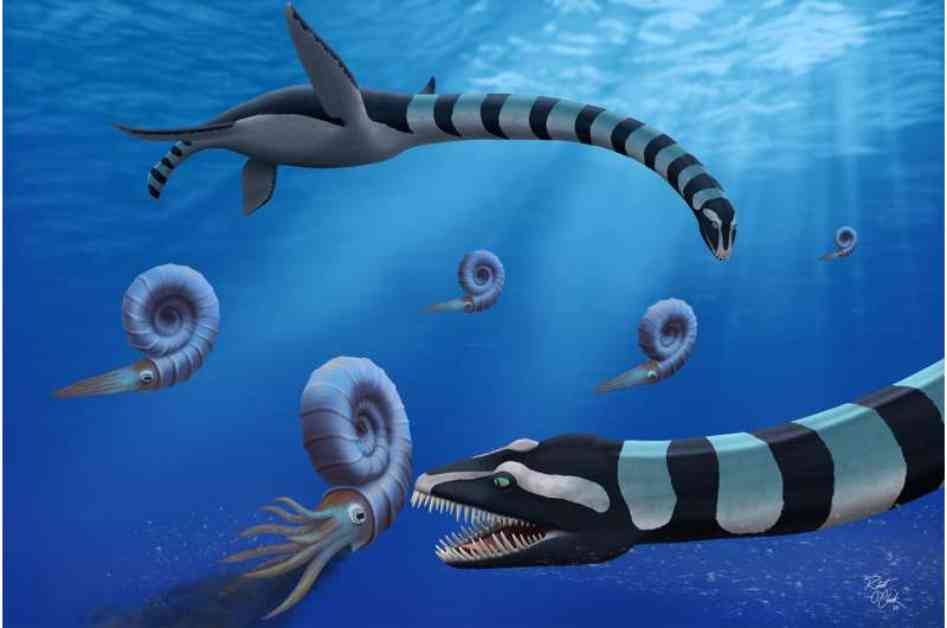Scientists have finally cracked the mystery behind a “very odd” long-necked sea monster found on the coast of Canada. The creature, which loosely resembles the infamous Loch Ness monster, measures 12 metres and has large, heavy teeth. The bizarre elasmosaurus is actually one of North America’s most famous fossils, becoming the official fossil emblem of British Columbia in 2023. Three specimens, all roughly 85-million-years old, were found along the Puntledge River on Vancouver Island in 1988. These robust gnashers were ideal for crushing and feasting on ammonites – coiled-shelled cephalopods, according to researchers.
A Unique Discovery Unveiled in Canada
The elasmosaurus, a peculiar marine reptile, has puzzled scientists for years with its unusual features and behaviors. The recent discovery of a new species, Traskasaura sandrae, has shed light on the creature’s mysterious origins and evolution. Lead author Professor F. Robin O’Keefe from Marshall University in West Virginia, US, expressed excitement over finally solving the puzzle surrounding the elasmosaurus fossils found in British Columbia. The new species, named in honor of the original fossil discoverers, Michael and Heather Trask, marks a significant milestone in paleontological research in the Pacific Northwest.
The Naming of Traskasaura sandrae
The naming of Traskasaura sandrae not only pays tribute to the individuals who unearthed the fossils but also serves as a lasting memorial to those who have made significant contributions to science. The unique blend of primitive and derived traits in this new species sets it apart from other plesiosaurs, adding to its intrigue and significance in the field of paleontology. The fossils of Traskasaura sandrae are now on public display at The Courtenay and District Museum and Paleontology Centre, allowing visitors to marvel at the wonders of prehistoric marine life in the region. As Professor O’Keefe aptly puts it, “The fossil record is full of surprises,” and Traskasaura sandrae is certainly no exception.


